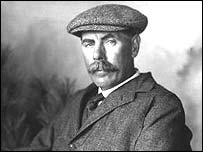Shifts In Golf Course Design
Back in the early 1900s, when the majority of our now celebrated golf courses were being designed, the development process was often a simple matter of enlisting the help of a Harry Colt or a James Braid to advise on the design before setting about the land with the help of local farmers and labourers. It’s a credit to these gentlemen that their course layouts are still regarded as some of the finest in the world.
 At the time, the concept of removing trees or using railway sleepers in bunkers was as cutting edge as capabilities allowed. Fast forward to the present and it’s clear (and inevitable) that course design has moved on. It’s the norm these days to push the limits, to “bury elephants” under the greens and stretch holes to previously inconceivable lengths. While in some cases the changes have been a necessary response to advances in equipment, in others it sometimes seems the motivation is purely the architect’s ego; the spectacular over the playable, the impressive over the subtle.
At the time, the concept of removing trees or using railway sleepers in bunkers was as cutting edge as capabilities allowed. Fast forward to the present and it’s clear (and inevitable) that course design has moved on. It’s the norm these days to push the limits, to “bury elephants” under the greens and stretch holes to previously inconceivable lengths. While in some cases the changes have been a necessary response to advances in equipment, in others it sometimes seems the motivation is purely the architect’s ego; the spectacular over the playable, the impressive over the subtle.
Designers are given directives, and you would assume always with compromising conditions. In the early 1900’s the limitations were largely physical, whereas today the limitations are more often than not environmental, political and financial. Satisfy the golfer that wants to play the best golf courses from the Championship tees, whilst abiding by the local environmental law regarding rare species, and don’t forget to bring it all in under budget and with a sustainable future. Get anything wrong, and the course (and more specifically the designer) becomes the object of ridicule and castigation.
Starting from scratch is one thing – and most likely to fall foul of the environmentalists – but when the task at hand is renovating an existing classic, it’s the purists the designer has to worry about. Does a critic come any tougher? Of course, everyone is entitled to their opinions and those on golf courses will always remain subjective, but sometimes I wonder whether the criticism often levelled at the renovations, modifications, and redesigns might be a little harsh. After all, nobody really knows what the likes of Harry Colt, James Braid and Alister MacKenzie would think of these adaptations. Who’s to know what they would have done given the technology and opportunity available today? Conceivably they may have been far more drastic with their thinking.
 That’s not to say that we go and dig up the originals and create beasts for the modern generation. I am certainly of the old school and whenever alterations are made to a great course, I always hope the design team are as sympathetic and subtle in their reworking as possible. Golf, perhaps more than any other sport, allows us to retain the old, while pioneering elsewhere. Some courses give us an almost palpable connection with our forebears which is a magical ingredient that can’t be manufactured. Yes, teeing it up on the first of a stunning new course is exhilarating, but, to my mind at least, there’s nothing finer in the golfing world than walking the misty fairways with the ghosts of Tom Morris, Bobby Jones or Walter Hagen. Turn over too much turf in your renovations and their footprints vanish.
That’s not to say that we go and dig up the originals and create beasts for the modern generation. I am certainly of the old school and whenever alterations are made to a great course, I always hope the design team are as sympathetic and subtle in their reworking as possible. Golf, perhaps more than any other sport, allows us to retain the old, while pioneering elsewhere. Some courses give us an almost palpable connection with our forebears which is a magical ingredient that can’t be manufactured. Yes, teeing it up on the first of a stunning new course is exhilarating, but, to my mind at least, there’s nothing finer in the golfing world than walking the misty fairways with the ghosts of Tom Morris, Bobby Jones or Walter Hagen. Turn over too much turf in your renovations and their footprints vanish.
But I digress – getting back to design. Perhaps nostalgia plays a part, but I’m sure it was the limitations of the day that actually helped make the classic layouts so special and ensured they withstood the test of time. With very little in the way of construction machinery and without consideration for the 300 yard drive, course design was a subtler, more nuanced practice that shunned the brash in favour of the balanced. There’s much less of the obvious of which to tire. The course continues to reveal new things to you every time you play. Of course, course maintenance wasn’t a patch on today’s standards, which leads me to thinking that perhaps some of the plaudits have been earned accidentally. Whatever the case, though, there’s no doubting there have been some true artists at work over the years.
All this makes me wonder what the famous designers would have done given the architectural possibilities of the twenty first century. Would we still marvel? Would they renovate their own originals? And moreover, what will golf courses look like in future generations.